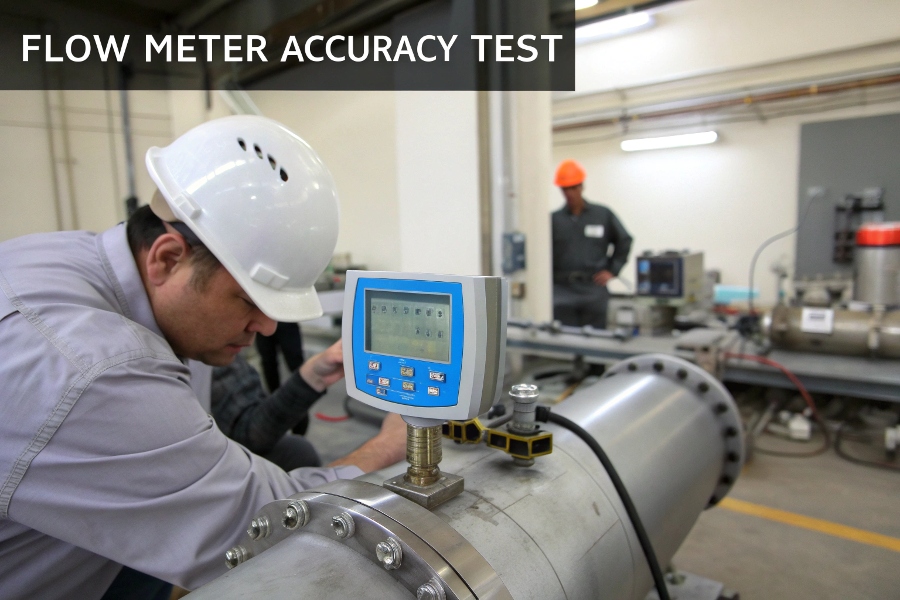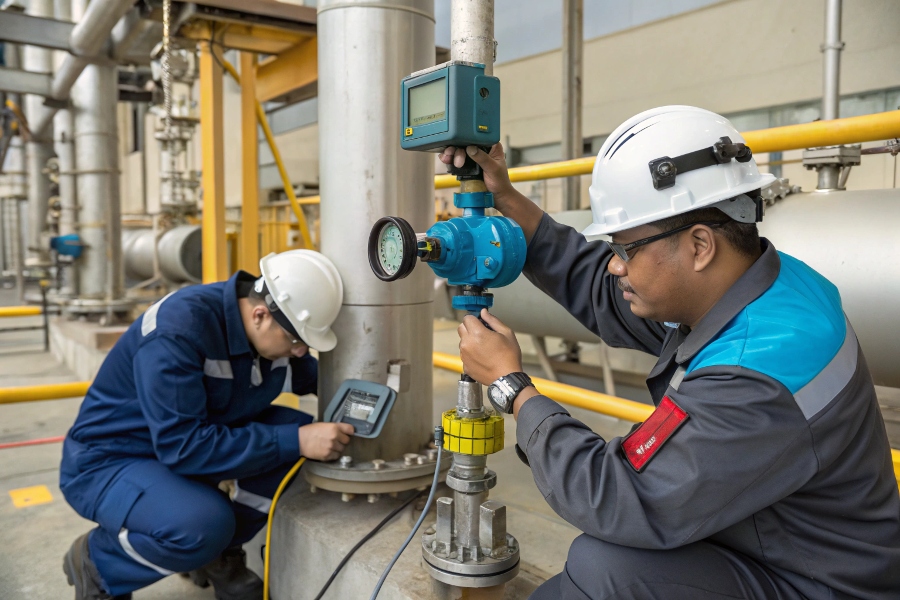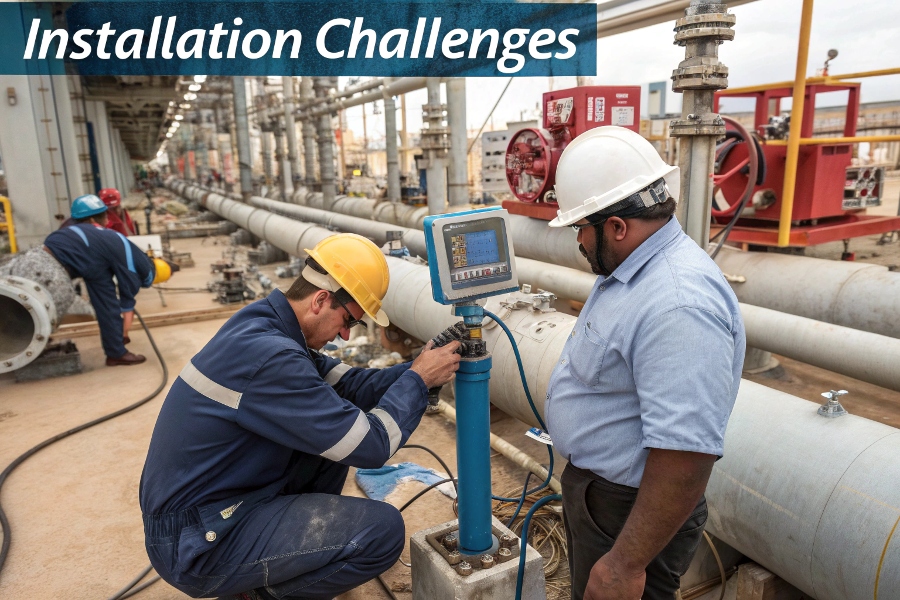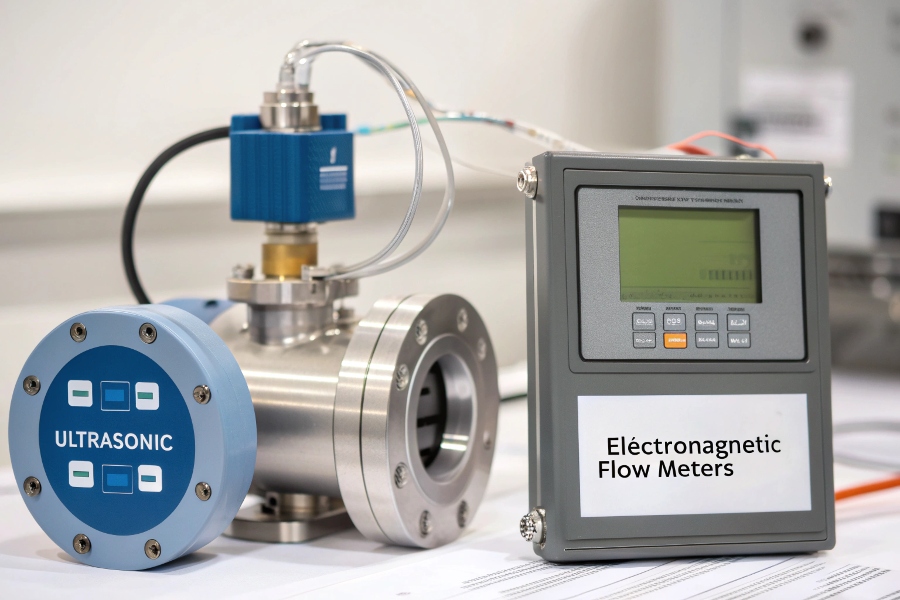Accurate flow measurement drives process efficiency. In industrial applications, electromagnetic flow meters continue setting the standard for conductive liquid measurement.
Electromagnetic flow meters typically achieve ±0.2-0.5% of rate accuracy when properly installed, outperforming most mechanical flow meters while maintaining their status as primary calibration references1 for other flow technologies.

Electromagnetic Flow Meter Accuracy Test
The story of flow measurement accuracy goes beyond specifications. Let’s examine why electromagnetic meters remain the preferred choice.
How Accurate Is the Electromagnetic Flowmeter?
Precision engineering makes electromagnetic flow meters indispensable.
In laboratory conditions with ideal installation, premium electromagnetic flow meters can achieve ±0.15% accuracy, with field installations typically maintaining ±0.3-0.5% accuracy for conductive liquids2 above 5 μS/cm conductivity.

Flow Meter Calibration Process
Accuracy depends on several critical factors:
Key Accuracy Factors and Ranges
| Condition | Accuracy Impact | Typical Range |
|---|---|---|
| Proper grounding | ±0.1% improvement | ±0.3-0.5% |
| Full pipe flow | Mandatory | Empty pipe = no measurement |
| 10D/5D straight piping | ±0.2% improvement | ±0.5-1% without |
| Clean electrodes | ±0.3% consistency | Fouled = ±1-2% |
| Stable fluid conductivity | ±0.1% stability | Varies with fluid |
Modern meters now incorporate automatic diagnostics that alert users to accuracy degradation.
Which Type of Flowmeter Is Most Accurate?
Accuracy depends on specific measurement needs.
Coriolis meters3 deliver the highest fundamental accuracy (±0.1%) for mass flow, while precision electromagnetic meters match this for volume flow in conductive liquids (±0.2%), both surpassing ultrasonic (±0.5-1%) and mechanical (±0.5-2%) alternatives where applicable.

Flow Meter Technology Accuracy Comparison
Breaking down the accuracy hierarchy:
Application-Specific Accuracy Leaders
-
Chemical Processing
- Coriolis: ±0.1% (mass flow)
- Electromagnetic: ±0.2% (conductive liquids)
-
Water Treatment
- Electromagnetic: ±0.5%
- Ultrasonic: ±1%
-
Oil & Gas
- Coriolis: ±0.15%
- Ultrasonic: ±0.5% (clean liquids)
-
Pharmaceutical
- Coriolis: ±0.1%
- Electromagnetic: ±0.2%
For conductive liquids, electromagnetic technology provides the best combination of accuracy and reliability.
What Are the Disadvantages of Electromagnetic Flow Meter?
Every technology has limitations.
Electromagnetic meters require conductive fluids (>5 μS/cm), full pipe conditions, proper grounding, and regular electrode maintenance – making them unsuitable for hydrocarbons, gases, or dirty applications without special designs.

Flow Meter Installation Challenges
Addressing these limitations:
Solutions for Common Challenges
-
Non-Conductive Fluids
- Use alternative technologies
- Consider hybrid meters
-
Installation Constraints
- Proper pipe layout
- Flow conditioners
-
Electrode Fouling
- Self-cleaning designs
- Ceramic electrodes
-
Power Requirements
- Low-power versions
- Solar options available
-
Grounding Issues
- Grounding rings
- Isolated designs
Recent advances include intrinsically safe versions for hazardous areas.
How Accurate Is the Ultrasonic Flow Meter?
Ultrasonic technology offers different accuracy profiles.
Clamp-on ultrasonic meters achieve ±1-2% accuracy, while in-line transit-time designs reach ±0.5-1% – making them suitable alternatives only when electromagnetic meters can’t be used (non-conductive fluids or temporary installations).

Ultrasonic Flow Measurement
Key comparison points:
Ultrasonic Technology Tradeoffs
| Aspect | Advantage | Limitation |
|---|---|---|
| Fluid Compatibility | Works with gases | Disrupted by bubbles |
| Installation | Non-intrusive | Sensitive to pipe quality |
| Accuracy | Good for gases | Below electromagnetic |
| Maintenance | Minimal | Periodic verification |
| Cost | Lower for large pipes | Higher per accuracy point |
For conductive liquids, electromagnetic meters remain the accuracy leaders.
Conclusion
Electromagnetic flow meters maintain their position as the most accurate (±0.2-0.5%) solution for conductive liquids, with continuous improvements extending their lead in industrial applications.
-
Discover the role of primary calibration references in ensuring measurement accuracy and reliability across different flow technologies. ↩
-
Discover the characteristics of conductive liquids and their importance in flow measurement, enhancing your understanding of flow meter applications. ↩
-
Explore the benefits of Coriolis meters, known for their high accuracy in mass flow measurement, to enhance your understanding of flow technologies. ↩
